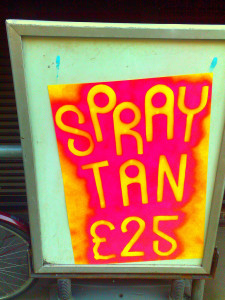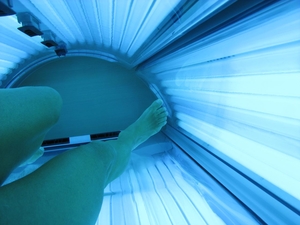Pregnancy can bring conflicting emotions. While you are absolutely overjoyed at the prospect of being a mother and nurturing a new life inside you, it might also bring on some not-so-pleasant changes in your body. There is no wonder that pregnancy is a time when women would want to pay more attention to how they look. And what’s more attractive than a sun-kissed skin? It can do wonders to your confidence and the way you look and dress-up. There are many ways to get that super bronze look. You can either sunbathe, apply self-tanning lotions and creams, or use a tanning bed. But is tanning while pregnant really safe?
Tanning while pregnant may not be the best thing for you. Why? Let’s explore.
Soaking up the Sun:
Relaxing in the sun and enjoying the warmth sounds like a wonderful idea, especially for pregnant women. After all, it is just not about that sun-kissed skin that will do wonders for your looks, you are also getting the much essential Vitamin D, which is also called the sunshine hormone. While it is okay to sunbathe for brief periods, getting a tan means exposing your body to sun for a prolonged time. And before you think this natural way of getting a tan is absolutely safe, it is advisable to read through the effects that sunbathing may cause:
- Lying in the sun for prolonged hours can raise your body temperature to a level that may be dangerous to your baby, especially during the first 3 months. Studies say that an increased body temperature can lead to defects in spine development (called spinal malformations) in developing babies.
- Some studies suggest that prolonged exposure to UV rays may be linked with folic acid deficiency. It is because UV rays can break down folic acid. We all know that folic acid plays an important role in the development of the baby’s brain and spinal cord, which are formed during the first trimester of pregnancy.
- While pregnant, your body is going through a lots of hormonal changes. These changes not only cause emotional upheavals, but are also responsible for making your skin more sensitive than usual. As a result, when you expose your skin to the sun, the chances of getting hives, heat rashes or chloasma also increase. It is a condition where dark blotches show up on your face and sometimes on the arms during pregnancy. Sometimes, these patches may not disappear even after delivery.
- Sunbathing can also cause dehydration, which may cause pre-term contractions in the pregnant body.
Well, pregnant or not pregnant, prolonged exposure to UV rays puts all of us at risks. It can increase the risk of developing malignant melanoma. Melanoma is a serious type of skin cancer that can be life-threatening. In addition, the sun’s UV rays can cause excessive dry skin, burning and lead to premature ageing of the skin. So even if you are tempted to soak-up the warmth and achieve that perfect tan while pregnant, try to take these basic precautions to minimize the risks:
- Apply Sunscreen of at least SPF 30.
- Stay hydrated, even if it is with plain cool water. It will also help prevent overheating.
- Wear large brimmed hat and sunglasses. This will help you to reduce the damage to the eyes and also protect your face, shoulder and neck area from getting exposed to the UV rays.
- It is best to avoid the sun between 10am and 4pm. This is time when the sun’s UV rays are the strongest.
Tanning while Pregnant with Tanning Lotions:
So, here are some good news. It is harmless to use self-tanning lotions, tanning towels and creams to achieve that super sun-kissed look. These products don’t penetrate deep into the skin. These fake tans contain an active ingredient, called DHA or dihydroxyacetone. It is non-toxic and it has been found that it reacts with cells that are present in the skin’s outermost layer. Since it doesn’t permeate into the skin, it can’t harm your baby. It surely helps you to avoid harmful UV rays, thereby protecting you from the adverse effects they have on your body such as overheating, skin-burn, skin-cancer, hives and chloasma. What’s more, the good quality lotions and creams have minimal smell and they provide fast and fantastic results.
Sounds like it is the best option for tanning while pregnant? Well, almost! Even if there are no known risks from using self-tanning creams and lotions, health practitioners encourage pregnant women to not use fake tanners in the first trimester, just as a precaution. Also because your skin is already more sensitive than normal, you should first do a patch-test on a small area of the skin to ensure that it will not cause any allergic reaction.
Take a look at the best self tanners
Using Spray Tans:
Health care providers recommend not to use spray tans while pregnant, because the spray tans contain aerosol fumes that are not safe. When inhaled, they enter the lungs and eventually enter your blood-stream. This can potentially cause damage to the developing baby.
Using a tanning bed:
Tanning beds presents the same dangers as sunbathing. Tanning beds operate by emitting ultraviolet light (UV) , which can cause serious skin-conditions and over-heating. And as we already know, increased body temperature can cause spinal malformations in the developing babies. So, getting a tan using a tanning bed is not actually safer than getting a suntan. For a more in-depth article, look at the safety of tanning beds.



